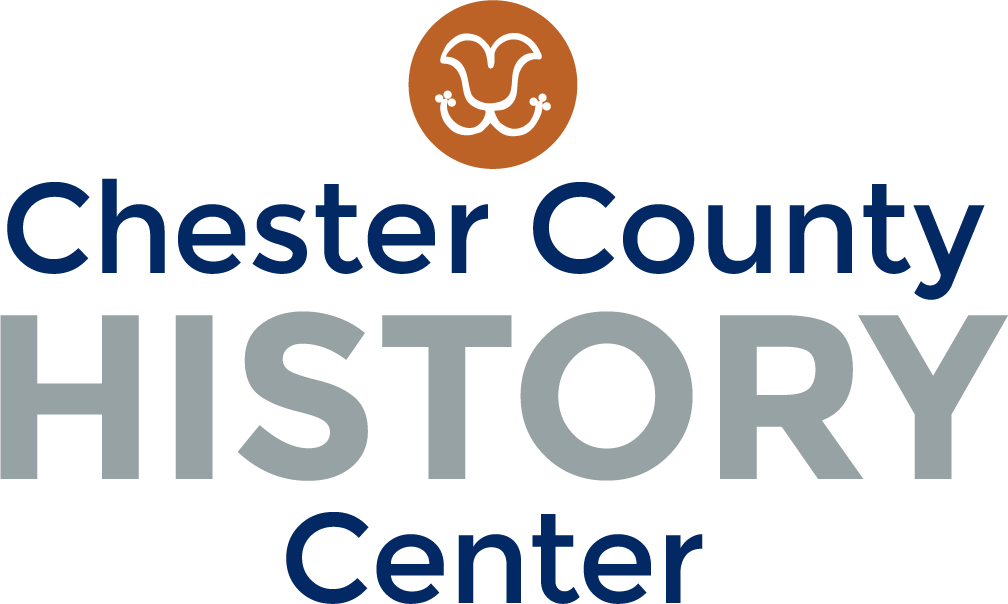Paintings Preserved
Six paintings in the museum collections underwent conservation treatment, thanks to a grant from the Institute of Museum and Library Services (IMLS). These paintings were identified in an IMLS-funded conservation survey several years ago as top priorities for care.
Why these paintings?
CCHC considers condition and our ability to care for artifacts when accepting donations offered for the permanent collection. Some artifacts, such as these, are accepted in fair condition because they are historically significant and there is realistic future possibility to obtain preservation funding. Staff accepted these paintings decades ago because they are artistically important and were painted by local artists of local places and people. They were not exhibited because, when initially received, paint was flaking and the surfaces were covered with grime.
Conservator at Work
Mark Bockrath, a Professional Associate of the American Conservation Institute, provided treatment proposals for each painting. Over two years, his work encompassed securing loose paint, cleaning grime from the surface, repairing damaged canvas, inpainting where paint was missing, and varnishing the surfaces. He added backing boards and completed minor work on frames. Each step is reversible, a key to ethical conservation.
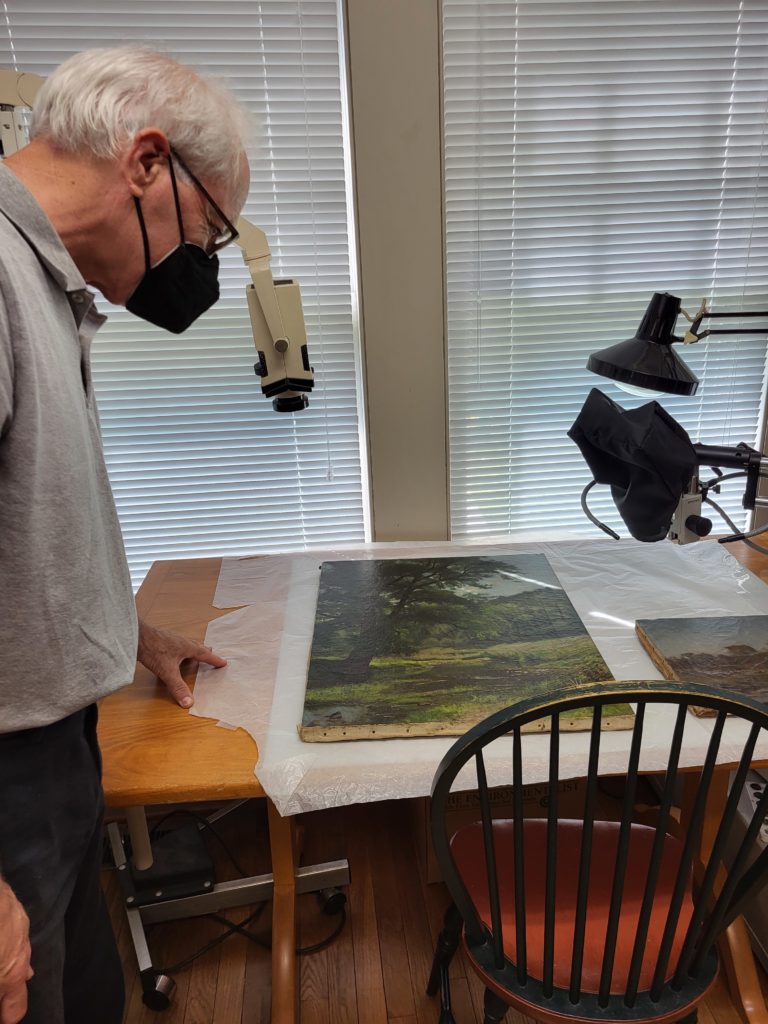
Remarkable Results
Three paintings were rendered by Benjamin McCord (1847 – 1904), who lived most of his adult life near Coatesville. Buck Run, shown here, depicts that area, which is underrepresented in the collection. Another landscape and the McCord farmhouse are depicted in the other two McCord paintings. All three paintings were donated by the Estate of Samuel Harry McCord. Benjamin McCord studied art in Chicago, New York, and Philadelphia. He was described as a quiet farmer and a member of the Church of the Trinity in Coatesville. McCord served on the township school board, members of which wrote upon his death, “We feel that in his death the community has lost one of its most useful and valued citizens and the cause of education one of its most enthusiastic friends.”
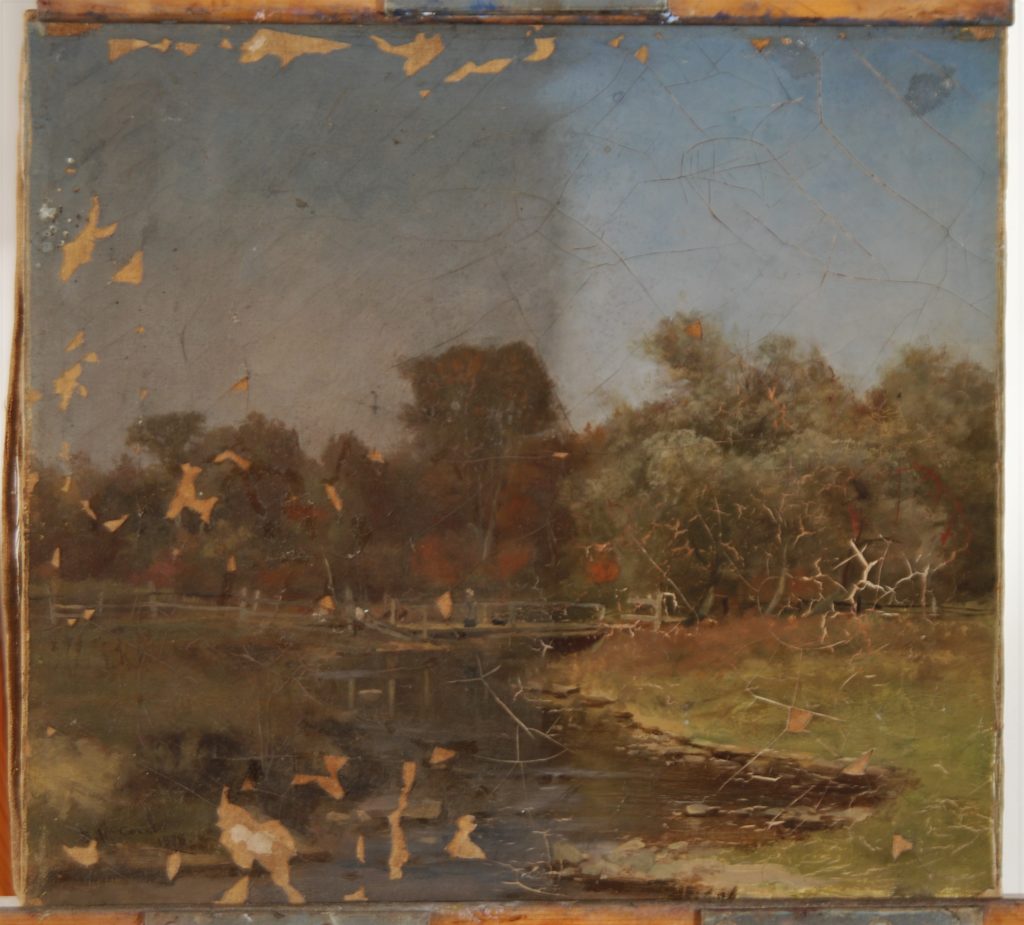
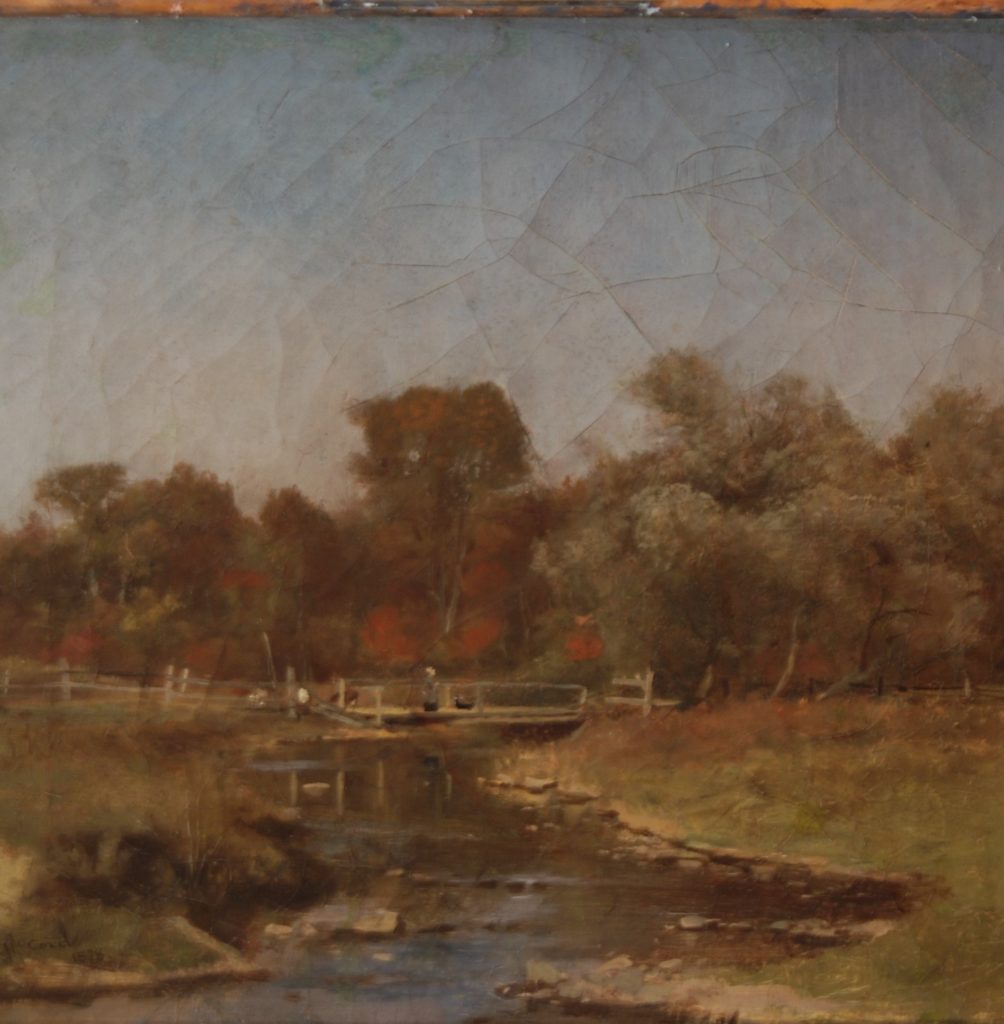
Hillside by George Washington Conarroe (1802 – 1882) is a local landscape by a regional artist. Conarroe is believed to have been born in New Castle, DE. He learned cabinetmaking in Salem, NJ, from William G. Beasley. There he also learned painting skills and by 1829 exhibited for the first time at the Pennsylvania Academy of the Fine Arts. His career in Philadelphia included numerous portraits of its prominent citizens. Conarroe was an active member of the Pennsylvania Academy, the Artist’s Fund Society and the Art Union of Philadelphia. This local landscape, according to the donor, depicts a view east of the entrance to the former P. M. Sharples Estate, one mile from West Chester.
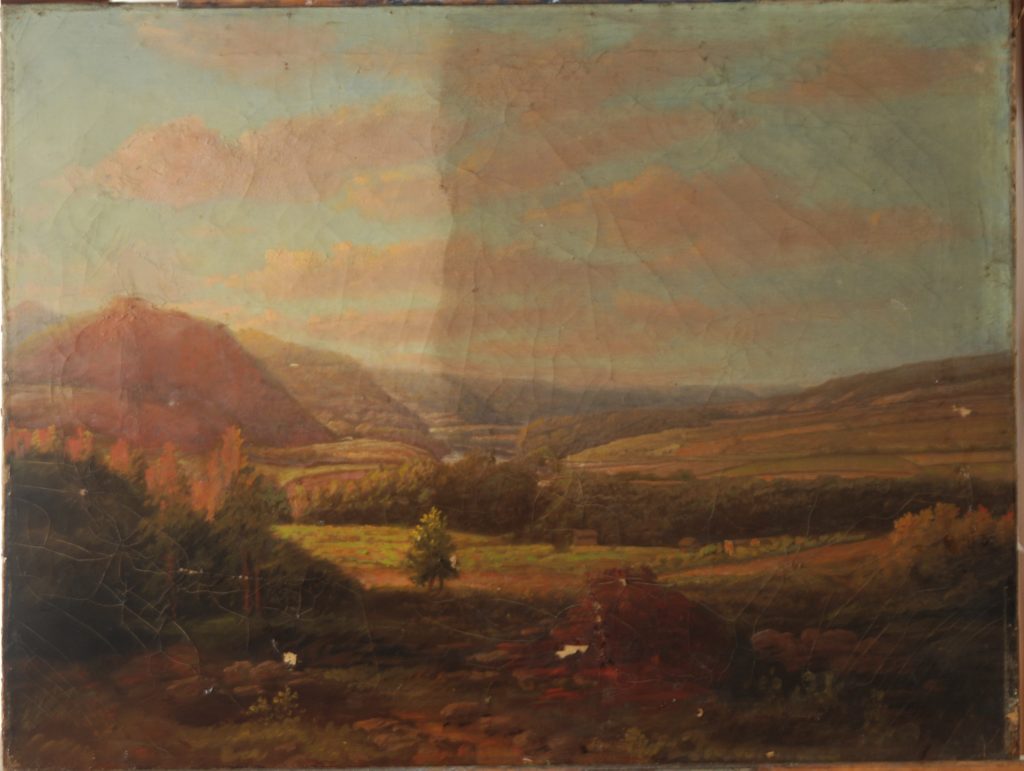
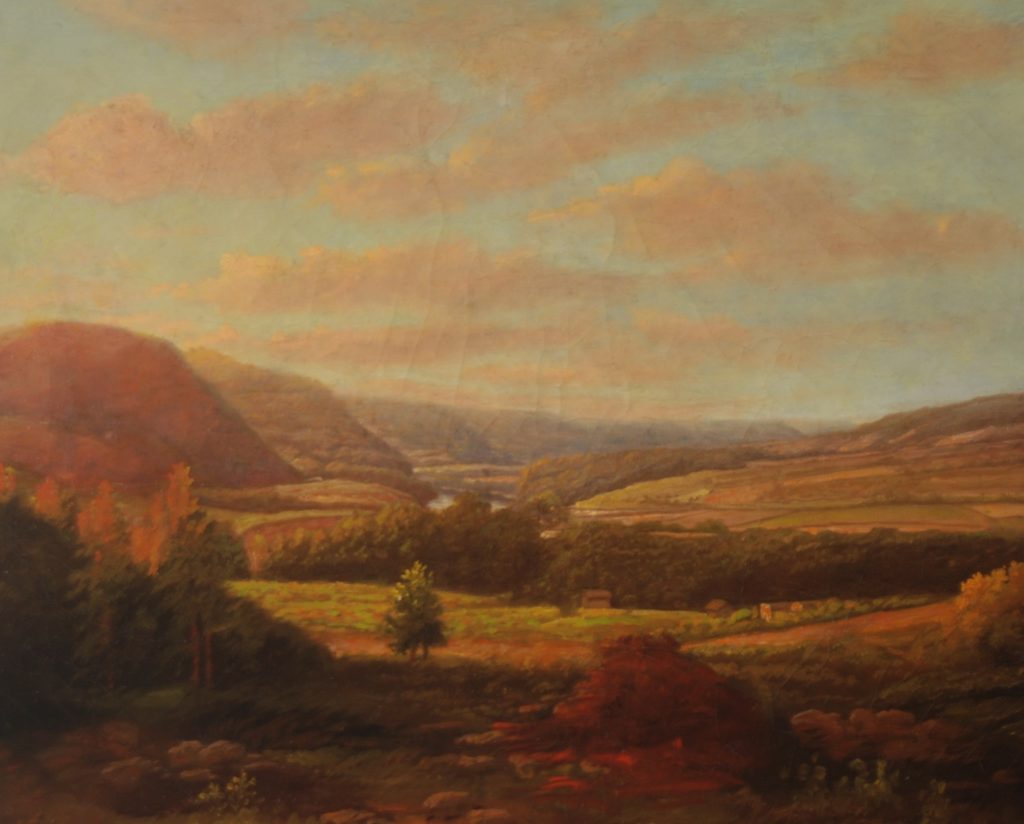
Bolmar’s Boarding School for Boys (circa 1840), is attributed to Thomas U. Walter (1804 – 1887). The boarding school, in operation from 1834 to 1860 in West Chester, no longer exists. In 1840, Antoine Bolmar purchased this building that formerly housed Mrs. Phelp’s boarding school for young ladies. The artist is thought to be the nationally renowned American architect, Thomas Ustick Walter who designed the building. He was born nearby in Philadelphia and at age 15 entered the Franklin Institute where he studied architecture with William Strickland. Walter became known for designing public buildings in the Greek Revival style, including several in West Chester, along with Girard College and the Capitol dome in Washington, D.C.
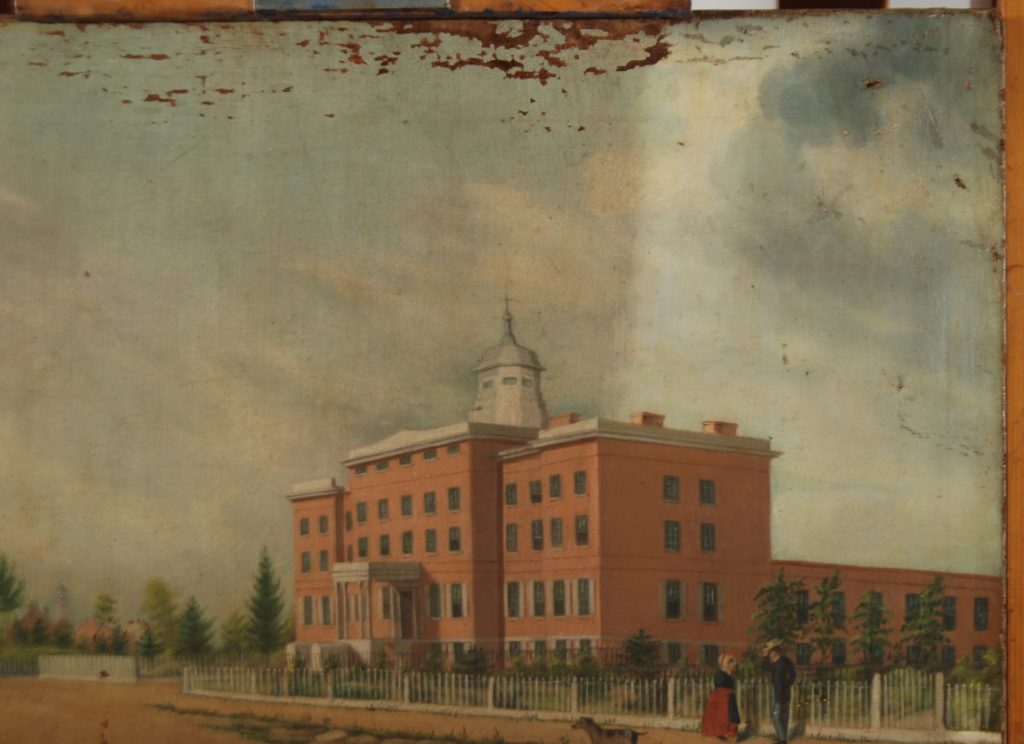
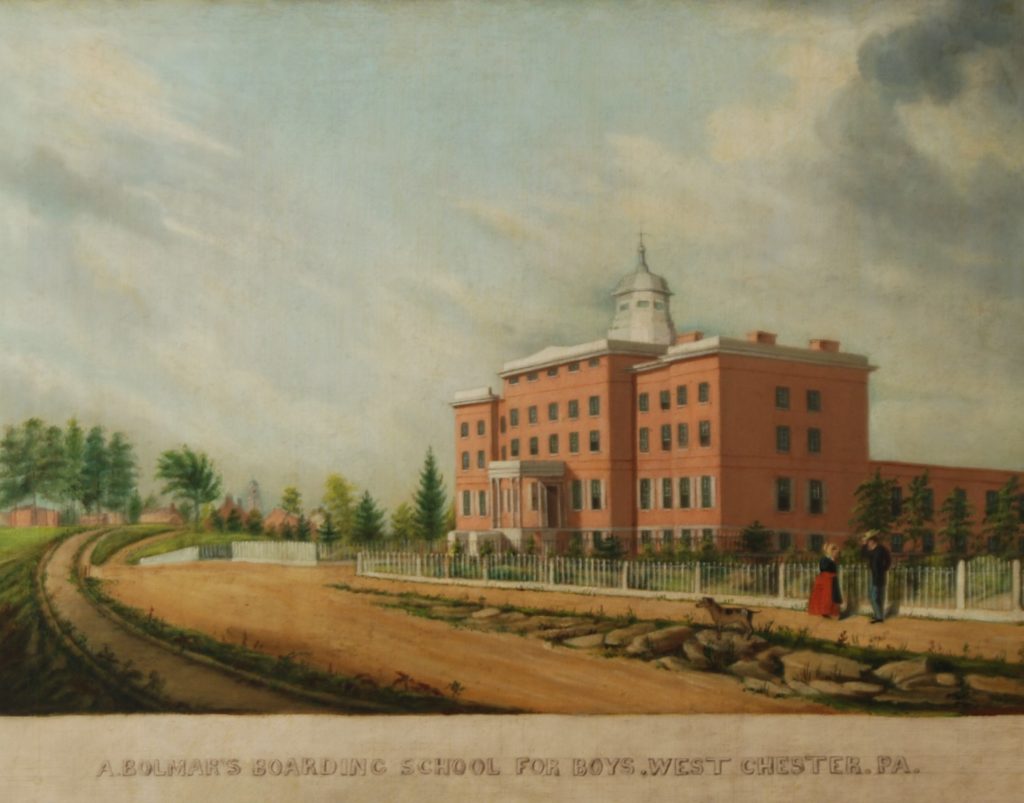
Ada Clendenin Williamson (1880 – 1958), a West Chester native, painted Child at a Puppet Show of her niece “Bambi”, Elizabeth W. Hansen. After studying at Howard Pyle’s School of Illustration at Drexel Institute of Art, Science and Industry (now Drexel University), Williamson went on to study at the Pennsylvania Academy of Fine Arts. Her early career encompassed magazine and book illustration. Her greater interest was portraiture and that soon became a cornerstone of her work. She had set up a studio in Philadelphia and by the 1930s, after her mother’s death, spent more time in Ogonquit, Maine. Williamson is also remembered as the daughter of architect T. Roney Williamson.
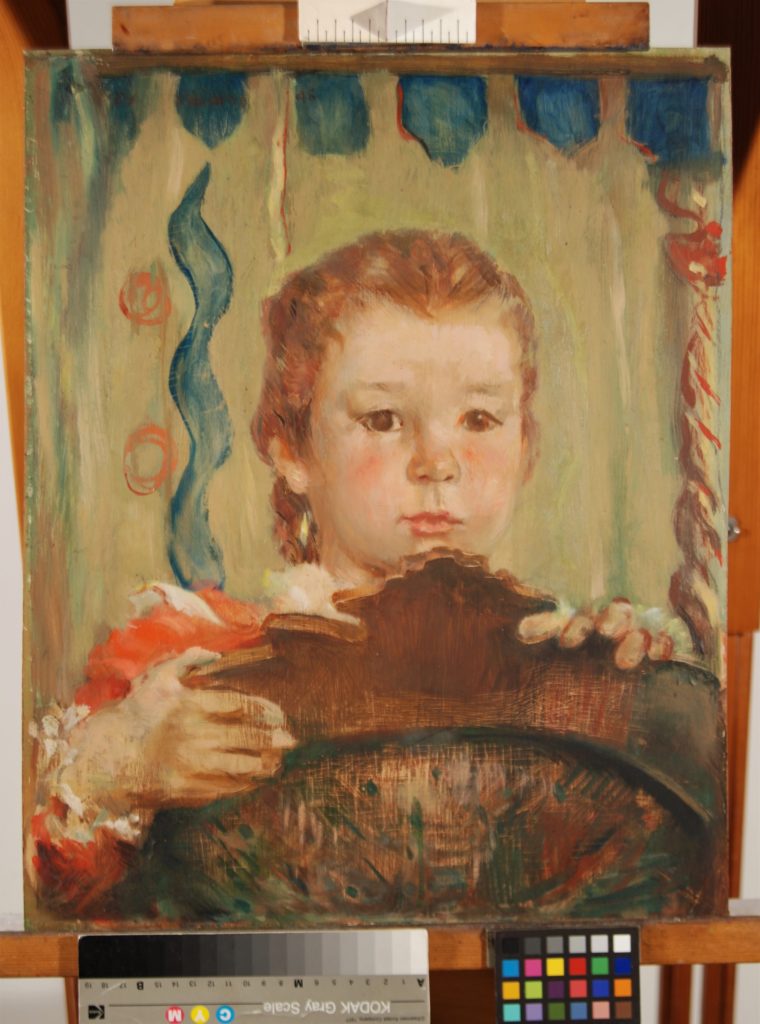
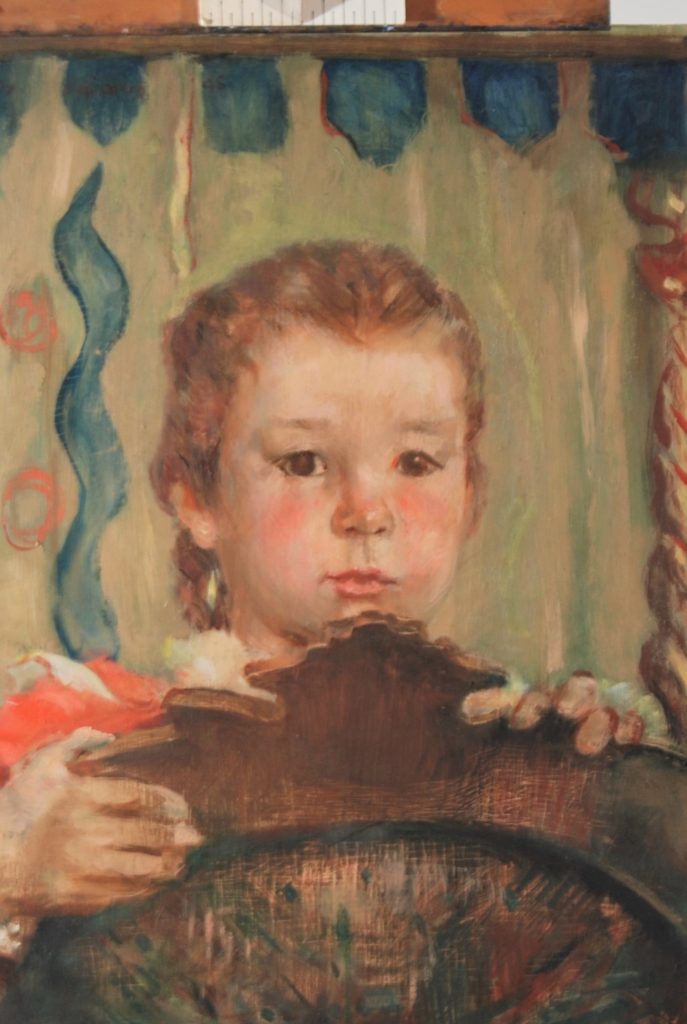
Stewardship
All of this conservation work is documented for future generations. The treatment reports describe the materials used and the steps in the process. CCHC is glad to be able to exhibit these pieces in the near future. Bolmar School for Boys is already on view in the recently opened Visible Storage Gallery (second from right), also partially funded by a grant from IMLS.
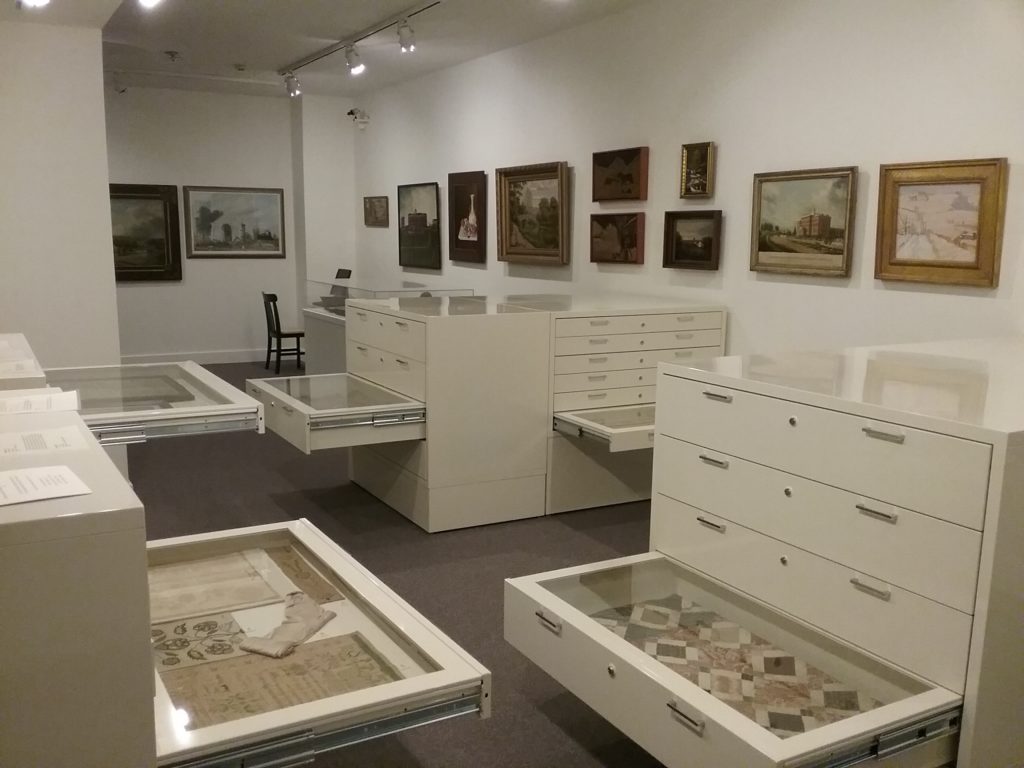
Support
CCHC gratefully thanks IMLS for its generous funding. The CCHC Collections Fund, designated for direct care of collections and acquisitions, provided the required matching funds.

